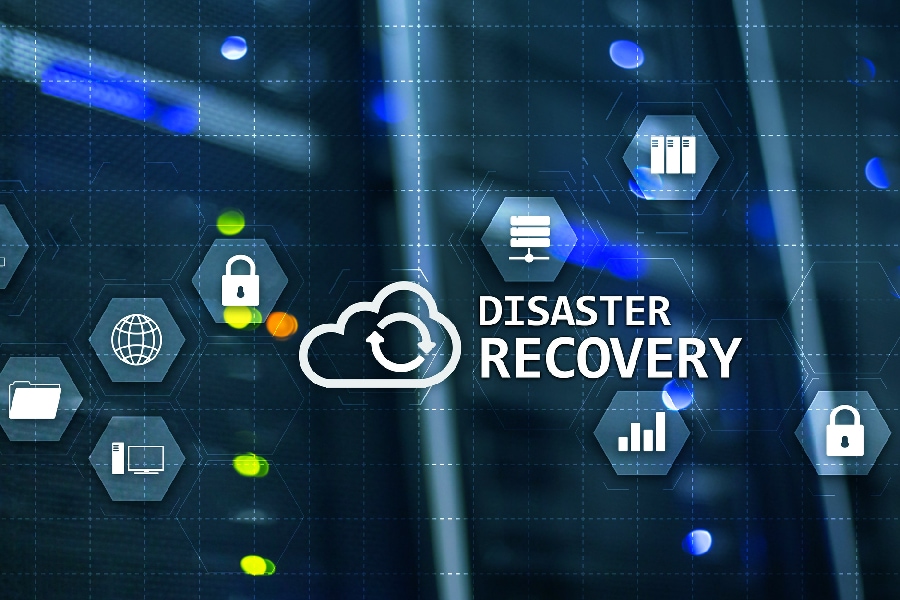The threat of ransomware attacks looms large over businesses and individuals alike.
With cybercriminals becoming increasingly sophisticated, it’s not a question of if you will become a victim, but when. The aftermath of a ransomware attack can be devastating, leaving your network compromised and your trust shattered. However, there are essential steps that must be taken to restore your network and rebuild trust to mitigate future risks.
We’ll explain the key measures that organizations and individuals should implement post-attack to ensure their networks are secure once again and regain the confidence of their stakeholders.
Need to Discover Your Solution?
Why Invest in Data Recovery and Network Restoration
With cybercriminals advancing in their attacks, it has become inevitable that everyone will face this threat at some point. The aftermath of such an attack can be catastrophic, leaving one’s network compromised and trust shattered.
We emphasize the importance of having a robust backup system in place before an attack occurs, as well as thoroughly analyzing the incident to understand its origin and impact.
From there, we’d guide you through the process of restoring their networks by removing malware infections, rebuilding systems from backups if necessary, and strengthening cybersecurity defenses moving forward.
Building confidence not only within one’s organization but also with clients or customers is vital for long-term success. It offers suggestions on how to communicate effectively about the incident, establish transparency about security measures undertaken post-attack, and ensure compliance with relevant regulations.
We’ll serve as a reliable roadmap for those who find themselves trapped in the destructive aftermath of a ransomware attack. By following our guide on data recovery and network restoration while maintaining professionalism throughout these challenging times – individuals and organizations can emerge stronger than ever before!
Strengthening Your System’s Defenses against Future Attacks
Building a fortress and strengthening your system’s defenses against future attacks is crucial. With the growing threat of attacks, it has become imperative to develop robust strategies to protect networks and rebuild trust after an attack.
One essential step post-attack is conducting a thorough security assessment. This involves analyzing the vulnerabilities that were exploited during the attack and identifying areas for improvement.
It may include updating outdated software, patching security loopholes, enhancing network segmentation, or investing in advanced intrusion detection systems. By understanding how attackers breached your system, you can fortify your defenses to prevent similar incidents in the future.
Another critical measure is establishing a comprehensive incident response plan. In case of another attack, having predefined steps and roles will help minimize damage and expedite recovery efforts. Assigning specific responsibilities to key personnel ensures a coordinated response while effectively managing resources at hand.
Building a fortified network not only protects valuable assets but also helps restore trust among stakeholders who rely on our ability to safeguard their interests.
Rebuilding Trust and Transparency with Employees and Customers
Communication is key in rebuilding trust and transparency with employees and customers after a ransomware attack. When an organization experiences such an attack, it’s crucial to keep all stakeholders well-informed about the situation to minimize uncertainty and anxiety. Employees should be promptly notified of the breach, its impact on their personal data (if applicable), and the steps being taken to address the issue.
Open lines of communication should also be established with customers. Reassuring them that their information is secure now and detailing the measures being adopted to prevent future attacks can help rebuild trust.
Clear, consistent, and timely communication helps foster transparency, which plays a vital role in regaining confidence from both internal and external parties.
Restoring trust requires more than just words – actions must also follow suit. With enhanced cybersecurity measures, such as increased employee training programs or strengthened network defenses, organizations can demonstrate their commitment to preventing similar incidents in the future.
Regular updates on security enhancements should be communicated to employees and customers alike as part of ongoing efforts towards building a trusted digital environment.
Effective communication is essential not only for restoring networks but also for rebuilding customer and employee trust post-ransomware attack. By being transparent about the incident’s impact, businesses can achieve greater resilience against future threats while fostering a sense of confidence.
Need to Discover Your Solution?
Turning Crisis into Opportunity for Improved Security Practices
The aftermath of a ransomware attack can be a turning point for organizations and individuals to reevaluate their security practices. The first lesson learned from such attacks is the importance of strong backup systems.
Regular backups are essential, as they allow affected networks to quickly recover without paying ransoms or experiencing prolonged downtime.
Another key takeaway from ransomware attacks is the necessity of comprehensive cybersecurity training and awareness programs. Education about phishing attempts, suspicious links, and other common methods employed by cybercriminals can help employees identify potential threats before they cause significant damage.
Post-attack evaluations should focus on identifying vulnerabilities in network infrastructure and promptly patching any outdated software or systems at risk. Organizations need to continuously update their antivirus software, firewalls, and intrusion detection tools while ensuring timely installation of security updates released by vendors.
Ransomware attacks serve as harsh reminders that no one is immune to today’s evolving threat landscape. However daunting these incidents may seem initially, they present valuable opportunities for organizations to improve their security practices.
Data Protection Strategies for a Resilient IT System
Businesses and individuals need to go beyond traditional backups to ensure their IT systems are resilient and protected. This means adopting proactive measures that can prevent attacks, detect vulnerabilities, and swiftly respond to incidents.
The need for a comprehensive approach to data protection that goes beyond simply creating backups. It highlights the importance of regularly updating software and security patches, implementing strong access controls.
Investing in advanced monitoring and detection tools can also help identify potential threats before they cause significant damage.
Focusing on these strategies, organizations can better safeguard their valuable data from ransomware attacks or other types of cyber threats. By building a resilient IT system with multiple layers of defense, businesses can minimize the impact of an attack and quickly recover without compromising vital information or losing customer trust.
We stress the necessity of going beyond basic backups by implementing robust preventative measures that bolster overall resilience against potential breaches or attacks.
Need to Discover Your Solution?
Building Stronger and Smarter in the Aftermath of Cybersecurity Threats
It’s crucial for organizations and individuals to take immediate action in the aftermath of a cybersecurity threat such as a ransomware attack. Restoring your network requires a series of essential steps, including isolating infected systems, removing malware, restoring data from backups, and patching vulnerabilities. These measures will help minimize ongoing damage and mitigate future risks.
Rebuilding trust is equally important after a cyberattack. Organizations need to communicate openly with customers and stakeholders about the incident, providing timely updates on the progress of recovery efforts and implementing measures to prevent similar attacks in the future. Transparency and accountability are key in rebuilding trust.
It’s imperative that organizations invest in cybersecurity training for employees at all levels. Ensuring that staff members have the knowledge and skills to identify potential threats can significantly reduce the risk of falling victim to future attacks.
Building stronger defenses by adopting advanced security technologies such as multi-factor authentication, encryption protocols, and robust firewalls can also bolster an organization’s resilience against cyber threats.
The fight against cybercriminals may be ongoing but being proactive rather than reactive is crucial in staying ahead of evolving threats.
We not only protect businesses’ financial stability but also maintain the trust and loyalty of their valued customers. If you’re looking for cybersecurity solutions anywhere in South Florida, contact Blue Light IT today.
Related Posts

Disaster Recovery and Business Continuity Planning
read more

Securing the Future: Cybersecurity for Manufacturing
read more

